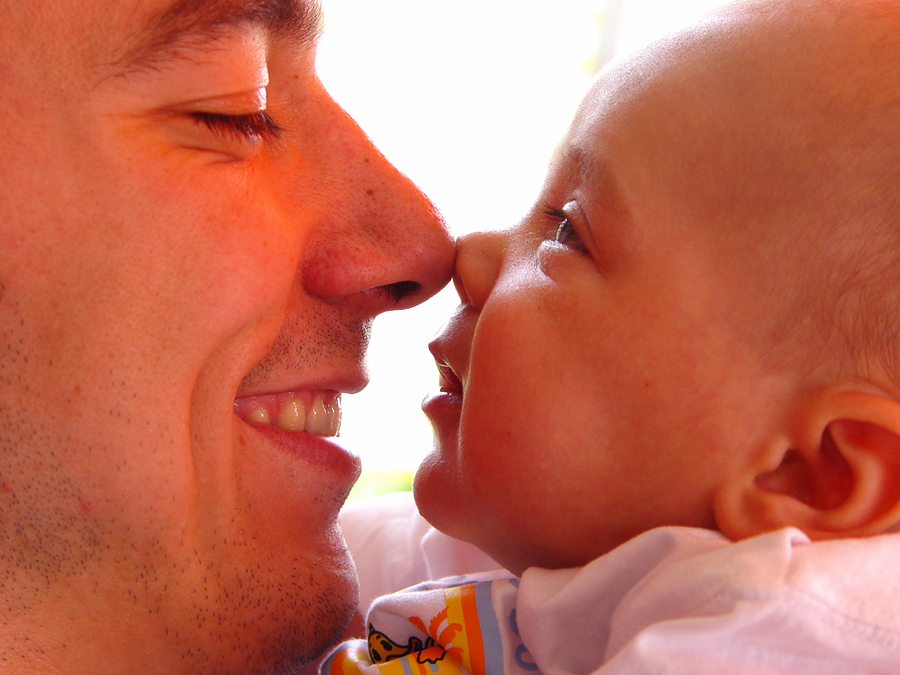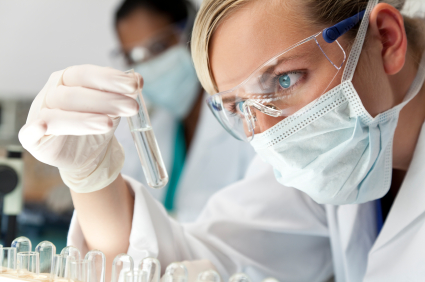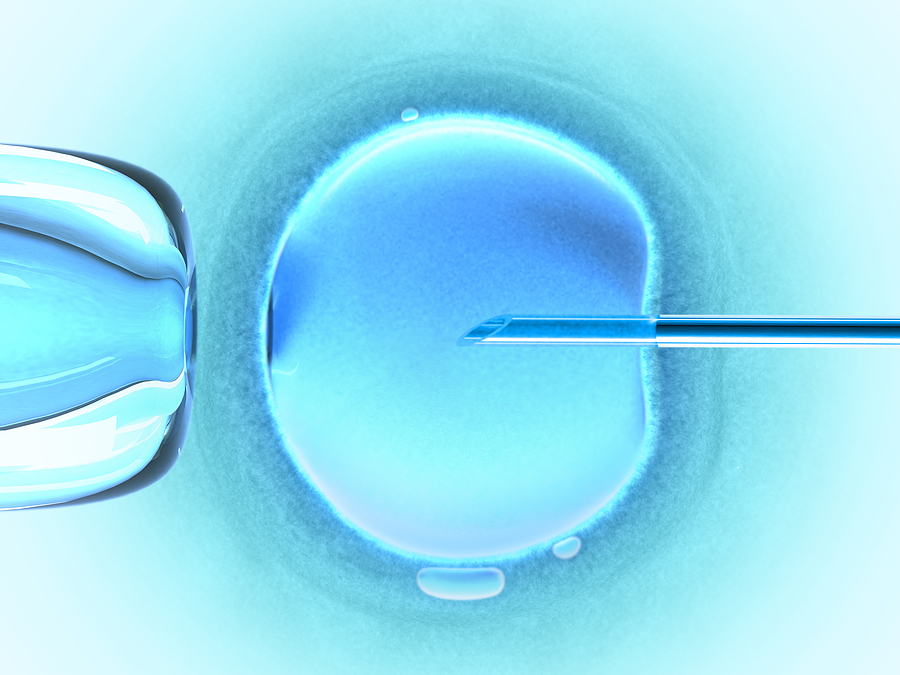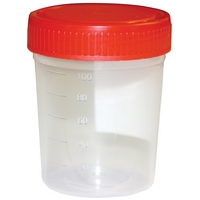Welcome to Co-ParentMatch.com
.jpg)
What is Co-ParentMatch.com?
Are you looking for a sperm donor?
Are you thinking about co-parenting?
Would you like to become a sperm donor?
Are you considering an alternative option to a sperm bank?
What is Artificial Insemination & Home Insemination?
What is Co-ParentMatch.com?
Welcome to the number one introductory service for sperm donors, co-parents and sperm recipients. We are the largest and most comprehensive online site for people who are either looking for a co-parenting or sperm donor match. Co-ParentMatch.com is the longest running website for co-parenting worldwide.
We have the largest database of sperm donors and sperm recipients across countries including UK, USA, Australia, Canada, New Zealand and throughout Europe.This site gives you the opportunity to register your personal requirements & search through the profiles of our existing members to identify a potential match. Maybe you want to help someone become a parent through sperm donation, you may want to advertise for a donor or co-parent to help you start a family or perhaps you just want some support and information on this exciting step in your life.
Co-ParentMatch.com will help you with lots of advice about how to become a parent through sperm donation. Whether you are looking for a sperm donor or co-parent or you are and considering donating sperm then we have all the information, shop products and search tools you will need to start your family. We also have lots of tips on pregnancy, birth and how to look after your new baby.
If you are trying for or expecting your first baby then your life is going to change in lots of different ways so use our planning guides to help give you a head start.

Are you looking for a sperm donor?

If you are looking for a sperm donor join for free today! We have thousands of sperm donor profiles to choose from. Our specialist sperm donor search tools let you view sperm donor in your area and you can search by other factors including race and religion. Our sperm donor list is updated every minute of the day so the sperm donor search helps you to find the perfect sperm donor.
A sperm donor can donate through a sperm bank or by home insemination and will be the biological father of any child born as result of his sperm donation Co-parentmatch.com is an introductory service for those who are looking for sperm donors and men who are willing to offer sperm donation.
Sperm donation could be an amazing opportunity for you and give a level of happiness you never thought you could achieve
You can communicate with other like minded people from all over the world including USA, Canada UK and Australia.
What exactly is Sperm Donation?
Sperm donation is when a man ejaculates sperm with the premise of providing that sample to a single woman or couple to become pregnant by home insemination, natural insemination or by artificial insemination.
Sperm donation samples can be provided by a known donor or anonymous donor. These samples are used in IVF and IUI treatments that help to achieve pregnancy.
Sperm donors are often used by single women and lesbians but there are other reasons why people will choose to find a sperm donor:
-Poor sperm count (motility)
-Erectile dysfunction
-Azoospermia
Sperm Donor Screening
Whether you are donating through a sperm bank or by home insemination a sperm donor must always be tested for health and fertility reasons
The sperm donor screening process includes tests for:
Infectious diseases including
-Genetic diseases
-Blood type
-Rhesus factor
How to choose your sperm donor
When it’s time to pick a sperm donor lots of people consider;
-Looks
-Physicality
-Religion
-Ethnicity
-Education level
-Career
-Wealth
When choosing a donor from sperm bank remember to check out:
-
Cost to view sperm donor profiles
-
Cost of the sperm itself
-
What is the quality of the sperm (motility levels)
-
What is the CMV status of the donor
-
Any add on costs to the sperm (some sperm banks add on a pregnancy fee)
-
Any difference in the cost of anonymous donors or Open ID donors
-
Cost of Shipment of the Sperm
-
Can the donor sperm you have chosen be shipped to your country of residence?
Are you Considering Co-Parenting?
Co-ParentMatch.com has been helping to create alternative families since 2007. We were the first website of its kind to introduce the concept of co-parenting to produce loving stable families. Co-ParentMatch.com has helped thousands of singles and couples achieve their dream of becoming a parent. Check out our success stories for some examples of the co-parents we have helped.
What is Co-Parenting?
If you have arrived at Co-ParentMatch.com you may well already know about co-parenting. This is a little different from traditional co-parenting as in this case we mean two or more people who agree to have a child and bring that child up together.

Searching for a Co-Parent?
If you are looking for a co-parent you can join Co-ParentMatch.com FREE today. You can then find and contact thousands of members who may be a potential co-parent match.
Are you single and want to be a co-parent?
If you are single and want to have a child that you raise with another person then co-parenting could be the answer for you. You may feel that now is the right stage of your life to start a family. Are you a woman who would like to have the father involved in your child's life? Are you a man who would like to be known as daddy?
Lesbian or Gay and considering Co-Parenting?
For lesbians and gay men it is becoming more and more common to be co-parents sharing parental duties between all parents.
The level of parental responsibility depends on various factors including whether you are legally married and how and where the child is conceived.
Find your co parent match
If you are looking for a co-parent to achieve your dream of parenthood then register with Co-ParentMatch.com now and start your search today.
Co-parenting enables parents to work together to bring up their children. Traditionally co-parenting has been a forced experience due to parents separating, but more recently Co-ParentMatch.com started a revolution for many single men and women to get together and make co-parenting their choice for beginning a family.
Search our co-parent profiles
-
Search our profiles for free now. We have thousands of co-parents and sperm donors all over the world. Find your co-parentmatch now.
-
Co-ParentMatch.com was the first site of its kind created in 2007 to help anyone who wants to find a sperm donor or is looking for sperm donation or a co-parent to have a child.
-
We are an introduction service to connect men, women and couples who would like to have a baby but simply haven't found the right person yet.
-
Our matching service for sperm donors and co-parents let you view member information that match what you are looking for.
-
Our sperm donor list is updated every hour so your sperm donor or co-parent would be waiting for you right now.
-
Co-Parentmatch.com provides an introductory service to anyone who wants a child but maybe has not found the right person by traditional methods.
Further Reading:
Co-Parenting
Co-Parenting Options
Health Checks for Co-Parents
Legalities of Co-Parenting
Would you like to become a sperm donor?

Give the gift of sperm donation
Sperm donation is an amazing way to give the gift of life to someone who may be struggling to have a baby by traditional methods. Becoming a sperm donor can help give someone the family they have always dreamt of. Register with us for free today - there are thousands of women desperately seeking your help. Be sure to read of legal facts section for information relating to sperm donors.
Are you considering an alternative option to a sperm bank?

Co-ParentMatch.com - The Alternative Sperm Bank
If you cannot afford to purchase sperm through a sperm bank or wish to use a known donor then Co-ParentMatch.com can be the perfect option for you. Many single women and lesbian couples have traditionally purchased donor sperm for artificial insemination from sperm banks around the world however this trend is now changing with more and more women selecting known donors from websites such as Co-ParentMatch.com
What is Artificial Insemination & Home Insemination?
Artificial insemination means a method to conceive through a fertility clinic such as IUI or IVF.
Home insemination refers to the use of simple sterilised equipment to help you get pregnant at home using donor sperm.
For some lucky people becoming pregnant happens fairly quickly, sometimes even first time. However for a lot of people getting pregnant is not always easy.
.jpg)
5 Simple Ways to Help you Become Pregnant Using Donor Sperm:
-
Ask your donor to produce up-to-date health tests to ensure he is disease free.
-
Ensure your donor has had his sperm tested for volume and motility
-
Ask your doctor for a fertiltiy check to ensure you can conceive
-
Closely monitor your ovulation to pin point the correct day for insemination
-
Follow our step-by-step guide for home insemination
Top Destinations
What is Intra Uterine Insemination (IUI)?
IUI is an assisted reproductive technique which places sperm directly into the uterus with the help of a very thin catheter. This procedure ensures that sperm are available to access a woman’s egg during ovulation. IUI was formerly known as artificial insemination although many people get confused with artificial insemination and home insemination.
Home insemination involves using a syringe to place sperm into the vagina whereas article insemination must be carried out by a trained medical professional due to the procedures involved. Visit our home insemination section for more information on this topic.
Within fertility clinics artificial insemination can occur in four different forms: intravaginal insemination, intracervical insemination, intratubal inseminations for the uterus and fallopian tubes. Intra uterine insemination is now considered a separate technique from artificial insemination.
IUI is the most commonly used method and intra tubal insemination is rarely used due to the invasive procedure involved.

What does the IUI procedure involve?
IUI is performed in a fertility clinic by threading a very thin catheter through the cervix using a speculum to open the cervix. Washed sperm is then injected directly into the uterus. The whole process usually takes no than 10 minutes and levels of discomfort are relatively low.
It is advised for you to have the procedure with a relatively full bladder so empty your bladder about an hour before your procedure is due and then drink water steadily to fill your bladder. You will be asked to wear a hospital hat and gown and your partnerwill be able to accompany you during the procedure – again he or she will have to wear an attractive hospital hat and gown.
When should I have IUI?
As part of the IUI procedure you will have an internal ultrasound scanon day 2 or 3 of your period and then a scan on day 10. The purpose of these scans is for your medical team to check the development of your follicles and measure the follicles and their location. The procedure is not painful and can last from 5-10 minutes. If you are taking fertility drugs such as Clomid which boost the number of follicles produced you may be asked to go in for a day 13 or 14 scan to check you haven’t over-produced eggs.
Depending on the length of your cycle and how the medial staff feel your follicles are developing you will be asked to perform an ovulation test by placing an ovulation test stick into a urine sample. You will be asked to do this each day with the first urine sample of the day until you get a positive result. The ovulation stick will indicate when you get your LH (Luteinizing Hormone) surge. This is a surge in hormone that happens prior to ovulation. As soon as you get the positive surge you will be asked to phone up the clinic to book in for your IUI usually the next day or same day.
Should I get up straight away after IUI?
There is no evidence to suggest getting up straight away after the procedure has any more positive effect to lying still for 20 minutes. This will be a personal choice for you. As your bladder will be full for the procedure you may be desperate to pass water. This is fine to do straight after your IUI.
What should I do after the IUI?
From the moment you have your IUI you should treat it that you are pregnant avoiding foods such as pate and soft cheese. Apart from that you can carry on as normal.
Is IUI painful?
IUI feels very similar to having a cervical smear- the only element where there is a small amount of discomfort is during the opening of the speculum. You may experience some cramping when the catheter is inserted through the cervix. The medical staff will be very good at ensuring you are comfortable and if your partner is with you he or she can distract you. The whole process can last anything from 5 minutes upwards so you don’t have too long to experience any discomfort.
How and when is the sperm collected for IUI?
If you are heterosexual couple your clinic will give you a time on the day of your procedure to collect a sperm sample in order for it to be washed and prepared for the insemination
If you are a single woman or lesbian couple you will have purchased donor sperm from a sperm bank or used a known donor’s sperm which will also have to have been frozen and tested over a six month period.
The donor sperm will then be thawed and prepared for insemination on the day of your procedure. The medical team carrying out your IUI will liaise with the andrologists who prepare the sperm sample.
What are the success rates of IUI?
Check with your individual clinic for their up-to-date success rates as success rates can be very low for this procedure. Success rate are commonly between 5-10% however they can rise to 26%. Success depends on whether you have produced one follicle or several with the help of a fertility drug and also an important factor is sperm count so if you are purchasing donor sperm it is well worth paying extra for samples with higher sperm volume.
How many IUI's should I have before trying IVF?
IUI is an expensive procedure in the UK at over £700 each time (that is without buying your sperm if you are purchasing it from a sperm bank and paying for shipment) however IVF can cost double this amount so it may be worth trying IUI if you do not have any recognized fertility issues and the sperm you are using is of good quality. Most people will try 3-4 cycles using fertility drug such as Clomid and if this fails you may want to consider IVF.
Can I do IUI at home?
You should never do IUI at home because the sperm needs to be washed (separated from the semen) to prevent infection as itis being placed directly into the uterus. Vaginal insemination is safe to do at home using a sterile syringe with the sperm sample in a sterile cup
What does 'washed sperm' mean?
Washing or spinning the sperm is a laboratory technique for separating sperm from semen and separating non-motile sperm from motile sperm.
The ejaculate is mixed with a washing medium followed by centrifugation (spun at high speed). The sperm rich fraction left at the end of this spinning process is mixed with more washing medium and the process repeated 2-3 times until only the highest quality sperm remain. This is then placed into a test tube ready for insemination.
What is DIUI?
This is the common term for donor intra uterine insemination i.e. if you are using donor sperm (sperm bought from a sperm bank or deposited from a known donor).
In Vitro Fertilization (IVF)
What is IVF?
IVF stands for In Vitro Fertilisation and it is a technique that helps couples have a baby if they suffer from fertility issues. The process involves surgically removing an egg from the woman’s ovaries and fertilising it with a sperm in a laboratory. The fertilised egg forms and embryo which is then placed back into the woman’s womb to grow and develop.

How is IVF treatment performed?
You will be given fertility drugs to stimulate your ovaries which will help to develop several mature eggs. During a normal cycle you may only produce one egg so taking these fertility drugs will you increase your chances of becoming pregnant.
These drugs will essentially switch off your menstrual cycle in order for hormone injections to then stimulate ovulation. These hormone drugs can give some strong side effects so you will be closely monitored by the medical staff who are looking after your case. Your doctor will be able to detect when your eggs are mature and at this point they will be ready to be retrieved. This process involves you being given a sedation anaesthetic which makes you drowsy but still conscious to enable the doctor to remove your eggs. Dont worry you will not be able to feel or remember the procedure.
If you are a married heterosexual couple during this procedure your husband will be asked to give a fresh sperm sample. If you are a single woman or lesbian couple you will use frozen sperm. In both of these cases the sperm will be washed to extract the best quality sperm to fertilise the eggs. The sperm is then combined with the eggs and cultured in an incubator. These samples will be checked over the next few days to see if the eggs have been fertilised resulting in an embryo. Hopefully several of your eggs will have been fertilised leaving you with more than one embryo for future use. The healthiest embryo can then be inserted into your uterus.
After your eggs have been extracted you will take progesterone hormone which helps to thicken the lining of your uterus. The healthy embryos will then be transferred into your uterus using a thin catheter threaded through your cervix. Legally up to three embryos will be allowed to be implanted to prevent the risk of multiple pregnancy. The number implanted will depend on your ageand fertility condition.
Women aged under 40 can have a maximum of two embryos transferred to the womb however women over 40 can have three embryos per cycle due to a smaller chance of conceiving with their own eggs. For women using donated eggs only two can be transferred. If the cycle is successful one or more of the embryos will implant in your uterus and continue to grow. You will be asked to do a pregnancy test two weeks after the embryos have been transferred.
Will I be able to have IVF?
In the UK the woman has to be between 23 and 39 years old at the time of treatment and have an identified fertility problem or have been trying unsuccessfully for a baby for at least three years.
In other countries around the world women are legally allowed to receive treatment into their 50's so research your clinics well before deciding where to go for your treatment.
Do I have to pay for IVF?
In the UK the Primary Care Trusts decide who is eligible for funded fertility treatments. For most heterosexuals if you have identified fertility issues you will be entitled to up to three IVF cycles funded by the NHS.
If you have an unidentified fertility issue and have been unsuccessful in getting pregnant after trying for at least three years, as a heterosexual you will be entitled to up to three funded cycles of IVF but as a lesbian you would not be entitled to any funded treatment!
Costs for IVF treatment vary greatly around the world. You are about to spend a lot of money on this treatment so do your homework. Contact several clinics and ask them what their success rates are (age related) and what their fees are. It may be worth spending a little more money on a clinic that has much higher success rates.
What are the IVF success rates?
Success rates are often determined by the age of the woman at the time of treatment. As younger women tend to have healthier eggs their chances of success are increased.
Women under 35 have the highest chances of conceiving at around 29%, this reduces to 17% for 38-39 years old and 5% for women aged 43-44. You should check all of your local fertility clinic success rates and compare them thoroughly. Success rates are usually available on the fertility centres websites however you can request the most up-to-date.
It is really important to check IVF success rates because if the success rates are much higher at one clinic which is further away from where you live it may be worth the extra journey to go to the best clinic.
If you are a lesbian couple you should also ask if the clinic have dealt with same-sex couples before and what their success rates have been. Some clinics are not very good in dealing with lesbian couples and it’s important that you feel welcomed, relaxed and you are receiving the best care.
Further Reading:
Health Screening
Ovulation
IVF
IUI
Artificial Insemination (AI)
Natural Insemination (NI)
Infertility
Tips on Conceiving
Home Insemination
Step by Step Guide for Home Insemination
3 Questions to Ask Yourself before Home insemination:
-
Is your donor disease free? Not sure? Get him tested!
-
Is your donor actually fertile? Does your donor have a high enough sperm count to get you pregnant? Does his sperm have good motility?
-
Am I ovulating? Monitor your fertile days using ovulation tests or a BBT chart.
What Equipment do I need for home insemination?


When should I perform home insemination?
Use an ovulation prediction kit and/or a BBT chart to determine your 2 most fertiledays. Inseminate during these fertile days i.e the two days before your LH surge and two days after if you can arrange this with your donor. If its not possible to inseminate over 4 days then stick to the 48 hours before your LH surge as indicated with a positive ovulation predictor test.
.jpg)
Home Insemination Guide:
1. Your sperm donor will firstly need to ejaculate into the specimen cup. Your donor should replace the lid on the cup and pass it to you as son as possible after ejaculation. Your donors’ job is now complete!
2. Get yourself into a comfortable position with your hips raised. If using a vaginal speculum a small amount of lubrication (sperm friendly such as PreSeed) may be required to effectively insert the speculum, but only use a small amount. The woman can very gently insert the speculum into the vagina to locate the cervix or why not ask your partner to help.
3. Insert the speculum at a 45 degree angle pointing slightly downward. Open the"bills" of the speculum 2 or 3 cm using the thumb lever. Position the bills so that the cervix "falls" in between. Secure the speculum by clicking the ratchet mechanism (plastic speculum). Make sure that you lock the speculum in place if it is a lockable speculum. Do not move the speculum while it is locked open as it may cause injury.
4. Wait for the sperm to liquefy, this would normally take 10-20 minutes, draw back the syringe once with nothing but air and then push the air out, then slowly suck up the sperm into the syringe (no needle required). The sperm can remain active for a 1-2 hour period as long as it is maintained at just below body temperature however it is best to inseminate as soon as the sperm liquefies.
5. Squeeze the contents of the sperm as far into the vagina as possible and near to the cervix – do not aim at the cervix as this could cause injury to the cervix and the woman could go into cervical shock. Leave the syringe in placefor a few seconds and then slowly withdraw it.
6. If you are using a speculum once the sperm has been inseminated slowly withdraw the speculum slightly to clear the cervix. Loosen the speculum and allow the"bills" to fall together. Continue to withdraw while rotating the speculum to 45 degrees, dispose appropriately as they are single use speculums. Dispose of used syringe and specimen appropriately also as they are also for single use only.
7. Lie down on your back with your hips propped up by a pillow for around 20-30 minutes. This should be ample time to allow the sperm to travel.
Other methods are available such as using a cervical cup however studies suggest that there is little difference in the conception rates and we suggest any method other than that above should be carried out by a medical professional.
Disclaimer:
We would recommend you seek advice from your GP if you feel you need further clarification around Home Insemination Procedures. We strongly recommend you consider all health and legal risks of carrying out insemination methods outside of a licensed fertility clinic.
Please refer to our FAQ's section for more information.
Co-ParentMatch.com will not be held accountable for any future actions or problems that arise as a result of carrying out such procedures)
Should I stay lying down after home insemination?

There is no evidence to prove that you should stay lying down after your insemination however if you have had home insemination using a syringe or natural insemination then it is more likely that the semen will stay in your vagina and around your cervix when you lie down then if you stand up straight away, so it wont do any harm.
Some guidance will indicate that lying on your back with your hips raised after insemination will increase your chances- again there is no evidence to prove this increases your chance of becoming pregnant but common sense would suggest that this will encourage the sperm towards your cervix and uterus. Just be careful if you suffer from urinary tract infections as it is advisable to empty your bladder after sex.
Home Insemination Risks

You will be taking a huge risk if you do not follow this guidance:
1) Insist on health test results including STI’s and genetic conditions
2) Insist on fertility tests such as sperm count, motility and morphology.
3) ID Check – is your donor who he says he is?
4) Always tell a friend where you will be and who you are meeting
5) Don’t attempt to use any equipment such as catheters attached to the syringe.
6) Report any members who pressure you for NI.
Further Reading:
Health Screening
Ovulation
IVF
IUI
Artificial Insemination (AI)
Natural Insemination (NI)
Infertility
Tips on Conceiving
Home Insemination
Related Articles:
Legal Facts
Getting Pregnant
Sperm Donation
Co-Parenting
Gay Families
Pregnancy & Childbirth
Your Baby
Comment on this Page